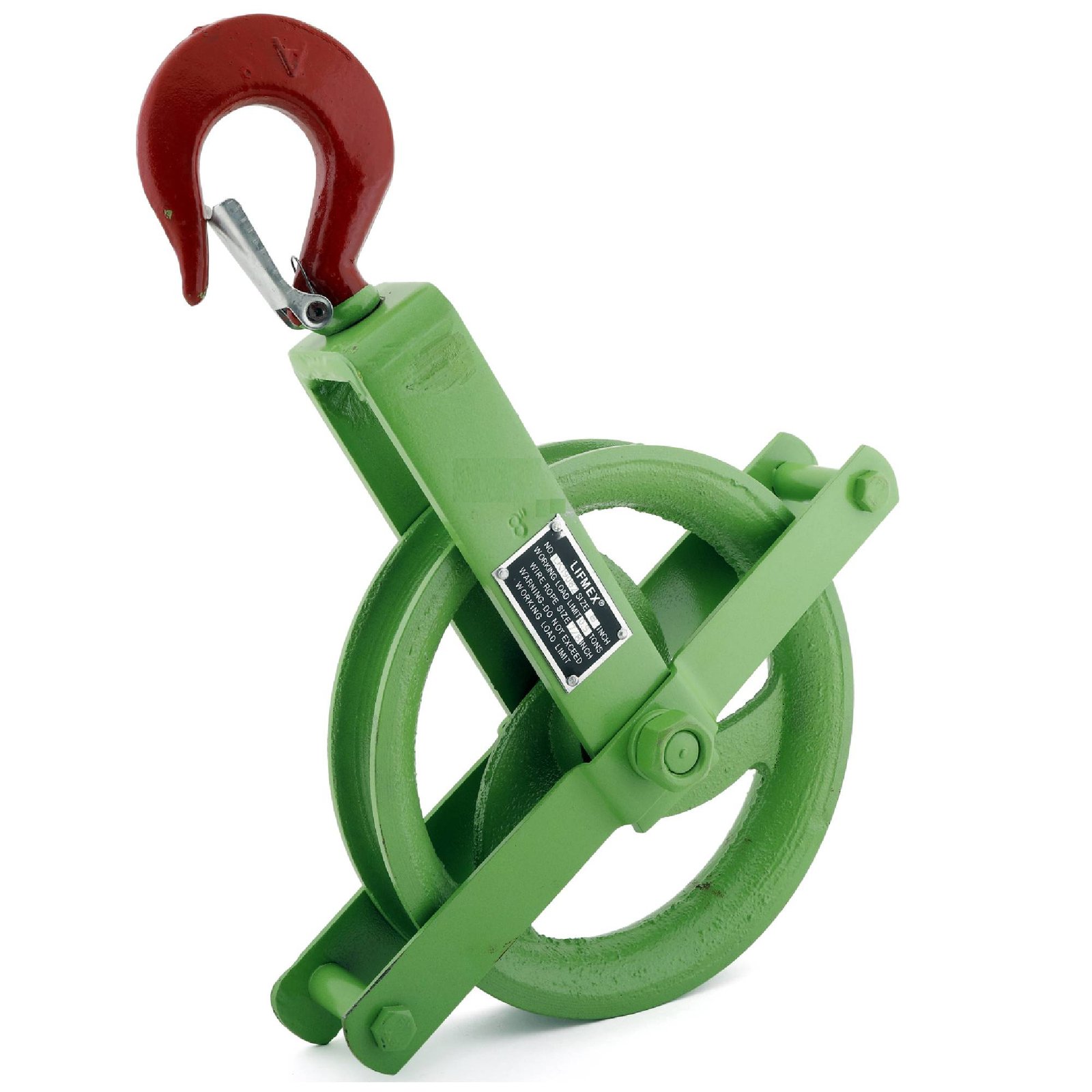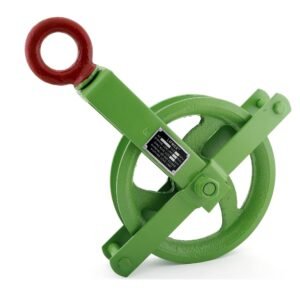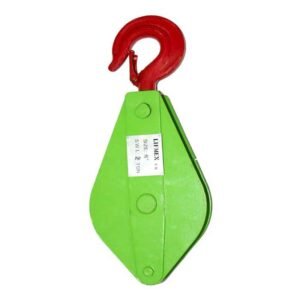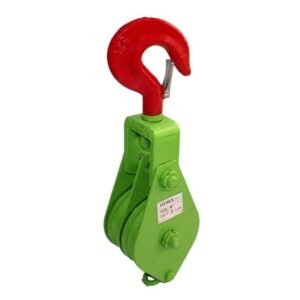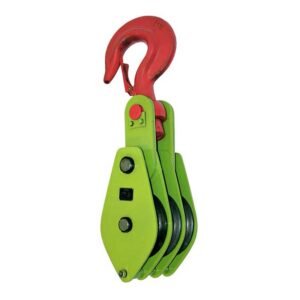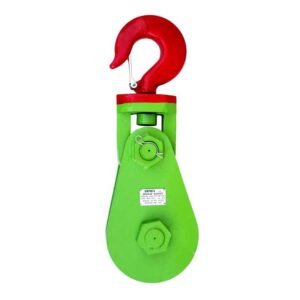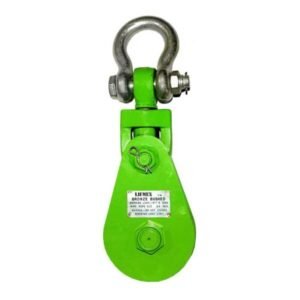Blocks are devices that are used to change the direction, speed, or force of a rope, wire, or chain that is used for lifting or moving heavy loads. Blocks are also known as pulleys, sheaves, or gin wheels, and they consist of one or more wheels that rotate on an axle or a pin. Blocks are essential for rigging operations, as they allow workers to manipulate the load with less effort and more control. Blocks are widely used in various industries, such as construction, mining, manufacturing, transportation, and entertainment.
Types of Blocks
There are many types of blocks available for different rigging applications, each with its own features, advantages, and disadvantages. Some of the most common types of blocks are:
Plain bearing blocks
These are the simplest and cheapest type of blocks, which have no bearings or lubrication. They are suitable for low-speed and low-load applications, such as hand-operated hoists or flagpoles. However, they have high friction and wear, and they require regular maintenance and inspection.
Ball bearing blocks
These are blocks that have ball bearings between the wheel and the axle, which reduce friction and increase efficiency. They are suitable for high-speed and high-load applications, such as cranes or winches. They have low wear and require less maintenance, but they are more expensive and sensitive to dirt and corrosion.
Roller bearing blocks
These are blocks that have roller bearings between the wheel and the axle, which also reduce friction and increase efficiency. They are similar to ball bearing blocks, but they can handle heavier loads and higher shock loads. They are also more durable and resistant to dirt and corrosion, but they are more expensive and heavier than ball bearing blocks.
Ratchet blocks
These are blocks that have a ratchet mechanism that allows the wheel to rotate in one direction only, and prevents it from rotating in the opposite direction. They are useful for holding or locking the load in place, such as in sailboats or rescue operations. They have a lever or a button that can release the ratchet and allow the wheel to rotate freely in both directions.
Snatch blocks
Blocks with a hinge or a latch that can open and close the side of the block allow the insertion or removal of the rope, wire, or chain without threading it through the wheel. They are convenient for changing the direction or angle of the load, such as in towing or rigging operations. They have a hook or a shackle that can attach to the load or the anchor point.
Safety Protocols
Using blocks in rigging operations requires following some safety protocols, such as:
Inspecting the blocks
Before using any block, it is important to inspect it for any damage, such as cracks, bends, breaks, corrosion, or wear. Any block that is damaged or defective should be discarded or repaired immediately. The blocks should also be checked for their load rating, which indicates the maximum weight that they can safely handle. The load rating should be clearly marked on the block, and it should not be exceeded under any circumstances.
Choosing the right size and capacity of blocks
Match the size and capacity of the blocks with the size and capacity of the rope, wire, or chain used for rigging. The diameter of the wheel should be at least three times the diameter of the rope, wire, or chain, to prevent excessive bending and stress. The capacity of the block should also be compatible with the capacity of the rope, wire, or chain, to avoid overloading or breaking. Calculate the block’s capacity by multiplying the load rating by the number of parts of the rope, wire, or chain passing over the wheel.
Securing the blocks properly
Secure the blocks properly to the load or the anchor point using hooks, shackles, slings, or other suitable attachments. Ensure that the attachments are compatible with the blocks and the load, and tighten and lock them securely. Align and position the blocks correctly to prevent twisting, kinking, or rubbing of the rope, wire, or chain. Space and balance the blocks evenly to distribute the load and tension equally among them. Furthermore, ensure that the attachments are compatible with the blocks and the load, and tighten and lock them securely.
Avoiding overloading or shock loading
Avoid overloading or shock loading the blocks, as it can cause damage or failure of the blocks, rope, wire, or chain.Overloading occurs when the weight of the load exceeds the capacity of the blocks or the rope, wire, or chain, leading to potential damage or failure. To prevent such issues, lift or move the load gradually and smoothly. Additionally, regularly inspect the blocks, rope, wire, or chain for any signs of wear or fatigue.The load suddenly lifting, dropping, or swinging causes a sudden increase in force and tension, leading to shock loading.
Types of blocks available
Gin Wheel Eye Type
GET IT NOW
Comm. Pulley Triple Wheel
GET IT NOW
Hook Type Heavy Duty Snatch Block
GET IT NOW
Shackle Type Heavy Duty Snatch Block
GET IT NOW
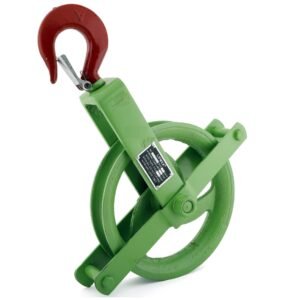
Gin Wheel
GET IT NOW
Blocks are a vital part of rigging equipment, as they enable workers to lift and move heavy loads with ease and efficiency. Blocks come in various types, such as plain bearing, ball bearing, roller bearing, ratchet, and snatch blocks, each with its own advantages and disadvantages. Blocks also require following some safety protocols, such as inspecting, choosing, securing, and avoiding overloading or shock loading of the blocks. By using blocks properly and safely, workers can perform rigging operations with confidence and competence.
For further insights or to discuss your unique requirements, we invite you to connect with us Explore the unparalleled expertise and quality solutions that Shabbir Enterprises brings to the table, ensuring your Rigging equipment needs are met with precision and reliability.
